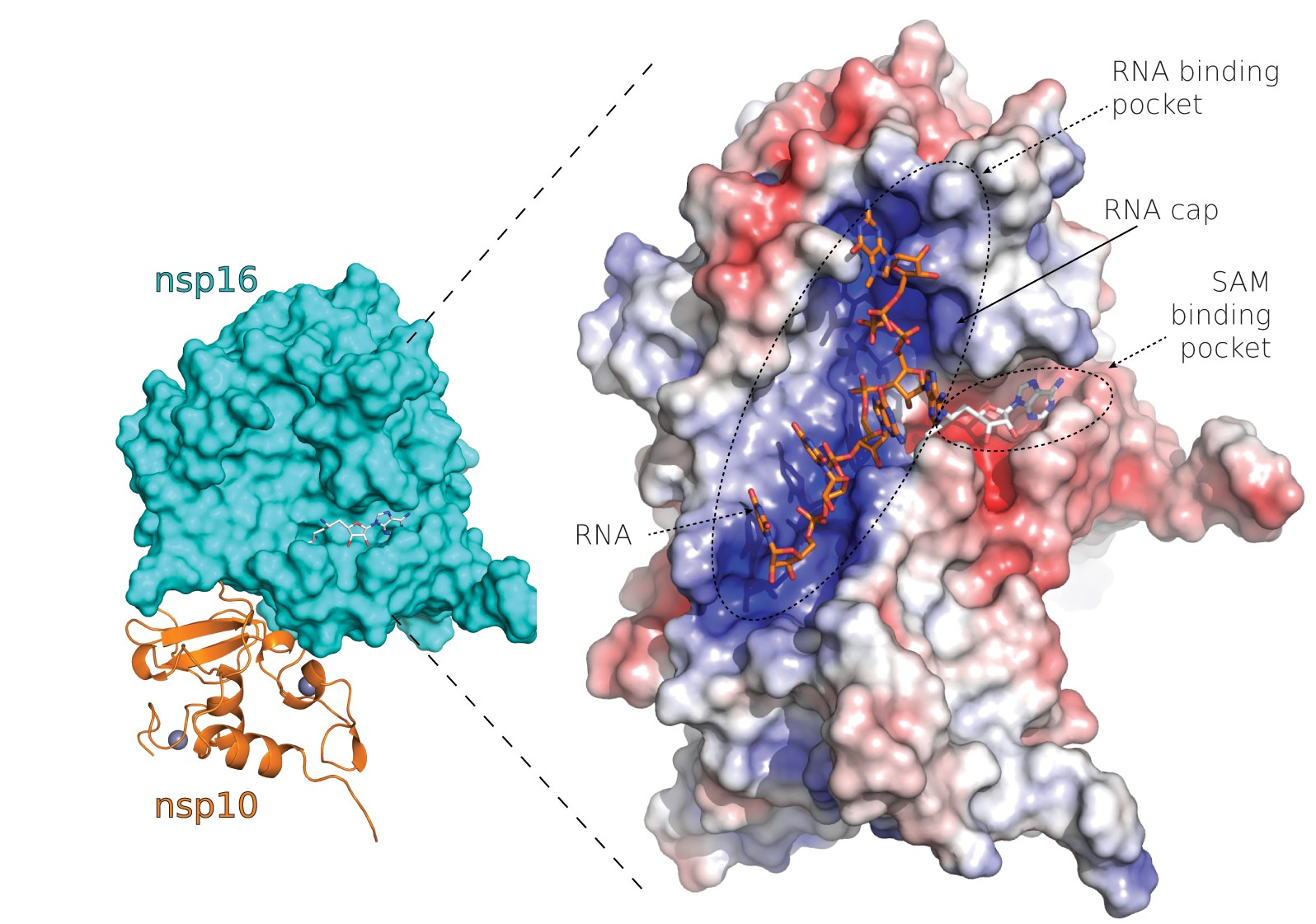

COVID-19 has changed the lives of millions and even billions of people around the world. The disease is caused by SARS coronavirus 2 (SARS-CoV-2), an RNA virus, i.e. a virus that uses RNA to store its genetic information. In order to confront it, we must have a detailed understanding of the structure and function of its individual proteins.
One of the mechanisms that the coronavirus uses to try and outsmart our immunity and convince our cells that the viral RNA is harmless is the installation of so-called caps, special structures at the beginning of the RNA, thanks to which the viral RNA imitates human RNA, allowing the virus to infect the human body and multiply within it.


The cap installation process catalyzes the Nsp16 coronavirus protein with involvement from another viral protein, Nsp10. Headed by Dr. Evžen Bouřa and Dr. Radim Nencka, a group of researchers at the Institute of Organic Chemistry and Biochemistry of the Czech Academy of Sciences used X-ray crystallography to determine and analyze the precise structure of the complex of these two proteins.
This allowed the researchers to identify several fundamental characteristics of the Nsp16 and Nsp10 protein complex, namely a deep canyon on the surface of the protein complex where binding of the viral RNA occurs and a cap is installed. This canyon can be targeted by inhibitors that suppress the activity of the Nsp16 and Nsp10 protein complex and thus of the entire cap installation process and may, in the future, serve as drugs to combat many coronaviruses.
“Hundreds of research teams tried to shed light on how the COVID-19 virus is able to hide its RNA from cellular immunity. In the end, two American teams and we here in Prague were the ones who succeeded,” explains Evžen Bouřa, head of the Structural Membrane Biology group. “We used X-ray analysis to determine the structure of the responsible viral enzyme with inhibitor.”
The researchers have published the results of their work in the journal Nature Communications.

